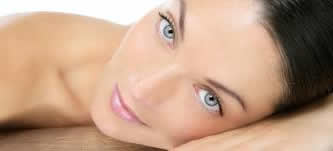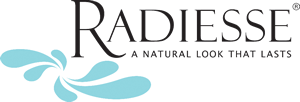Today we are more concerned than ever about what we put into our bodies. But, what about the products we put on our skin? Understanding cosmetic labels can be very confusing and perplexing for most of us. Is natural better than chemical? Do the ingredients penetrate the skin? Are there chemicals that should be avoided? These are just a few of the many concerns we have when shopping for skin care products. In order to be sure of what we are getting we must be savvy consumers and know how to read labels. Natural isnt always good and chemical or synthetic isnt always bad. The following are a few tips and guidelines:
- When possible avoid fragrance and color. They are not necessary and are often the culprits for skin rash, itching, redness and irritation.
- Fragrance free means the product excludes fragrance. However unscented products typically contain some fragrance to mask malodorous formulations. Keep in mind natural scents or essential oils can cause significant skin irritation. Examples include commonly used scents such as peppermint, grapefruit, Cinnamon, bergamot and strawberry.
- According to the Safe Cosmetics Campaign the following should be avoided when possible: parabens, sodium laureth/sodium laurel sulfate, petroleum, phthalates, and formaldehyde. You will have to judge for yourself. Lets take them one at a time
Parabens, which include methyl, ethyl, propyl and butyl, are used as preservatives. These ingredients are very effective in preventing the growth of bacteria, fungus and mold. At this time it is used in a majority of skin care products (and even in food items) due to its stability and efficacy.
Sodium laureth/laurel sulfates are commonly used in cleaners and can cause skin irritation. Most people do not have difficulty with these ingredients, but if you have sensitive skin, rosacea or are prone to acne you can find adequate cleansers made with plant oils.
Products with petroleum such as Vaseline have been around for many years and are even used in hospitals to treat wounds and for basic skin care. If you are uncomfortable with this there are many moisturizing alternatives to try such as glycerin, beeswax, or natural plant oils.
Consumer concern about the safety of Phthalates, which include, diethyl, dibutyl and dimethyl phthalates continues to grow. Phthalates are plasticizers and are commonly used in nail polish, hairsprays and fragrances. Animal studies with phthalates caused birth defects, liver disease, reproductive impairment among males, and a list of other adverse symptoms. At this time scientists dont know what effect small amounts of phthalates have on humans, but small amounts have been found in urine. Some companies have voluntarily removed phthalates from their products in response to consumer concerns. They include OPI, Sally Hansen, Avon, Cover Girl, Estee Lauder, Max Factor, Orly and Revlon among others.
Formaldehyde is a preservative and is not used as much as in the past due to its reaction with other chemicals called amines. This combination can form nitrosamines, which are carcinogenic. Products without formaldehyde are common and easy to find. For a complete list see www.safecosmetics.org.
- Cosmetic products without preservatives should be refrigerated. With all products, use a spatula, not your fingers, when dipping into a jar or container to prevent bacterial growth and contamination.
- Mineral make-up has become a huge trend and for good reason. They are natural, non-irritating, and non-comedogenic foundation that also provides great sun protection. Mineral make up, which includes, face powder, eye shadow and blush contain natural elements such as zinc, titanium, and iron oxides. Due to their popularity and excellent coverage companies making mineral products have doubled in the last year. They do not contain chemical dyes or fragrance, which makes them a perfect choice for those with sensitive skin, acne and rosacea. If you prefer a liquid foundation to a powder, just place a moisturizer, about a pea size, into the palm of your hand and add mineral powder then mix with your finger and viola you have a liquid foundation.
- The list of ingredients are in order of amount the first five ingredients listed on the label are the primary components of the product and the last few ingredients may not necessarily be of concern. For example, if alcohol is listed in the top three then the product may be too irritating and drying for the skin. However, if it is listed lastly it is probably in trace amounts and should not be irritating to the skin.
- If you have sensitive skin or are unsure if you will react adversely to a product then try it out on your forearm first by applying a small amount to the inside of your arm. Overnight should be enough to give you a fair warning. Adverse signs include itching, irritation, redness and discomfort.
- You can find natural and organic products at Whole Foods, Elephant Pharmacy and Trader Joes. Even Target and Walmart are carrying skin care products such as Kiss My Face and Jason, which are often very inexpensive. Other brands to consider include MyChelle, Aubrey, GratefulBody, Zia, Juice beauty, Berts Bees, Honeybee Garden and Dr. Hauschka.
- Its always a good idea to be environmentally conscious and recycle the containers beauty products come in just the same way you would recycle a food container. FYI: MAC offers a free lipstick for every six MAC containers returned to their counter.
For those who enjoy making your own natural
beauty concoctions, have fun with the following recipes:
Mashed avocado is a great moisturizing mask for the face. Apply to a cleansed face for fifteen minute then rinse with water.
Honey is a humectant and lovely as a moisturizing mask. Follow instructions above.
Soaked green tea bags can be very soothing for tired puffy eyes. Relax and apply a compress for fifteen minutes.
Olive oil is often used as a moisturizer for the hands and feet.
A drop of olive oil is beneficial as a pre shave oil for men.
Honey has antimicrobial properties and can be used as a spot treatment for acne.
Tea tree oil also has antimicrobial properties as a spot treatment for acne.
Salt scrubs are best for the body while a sugar scrub is gentle enough for the face.
cup brown sugar
1 cup Epsom salts
cup olive oil
Optional spices- cinnamon, cloves or nutmeg
1 cup brown sugar
cup olive oil
tsp. vanilla or almond extract
Globally conscience web sites:
www.gratefulbody.com
www.makeyourowncosmetics.com
www.burtsbees.com
www.saffronRouge.com
www.B-glowing.com
www.ewg.org
www.drugstore.com (click on natural link)










